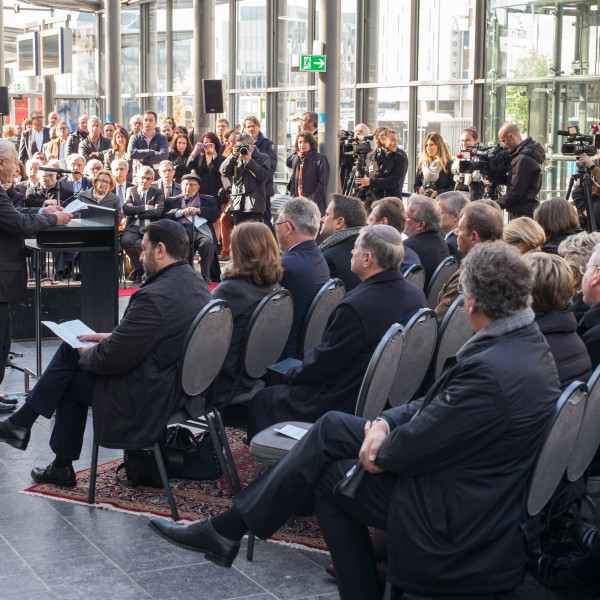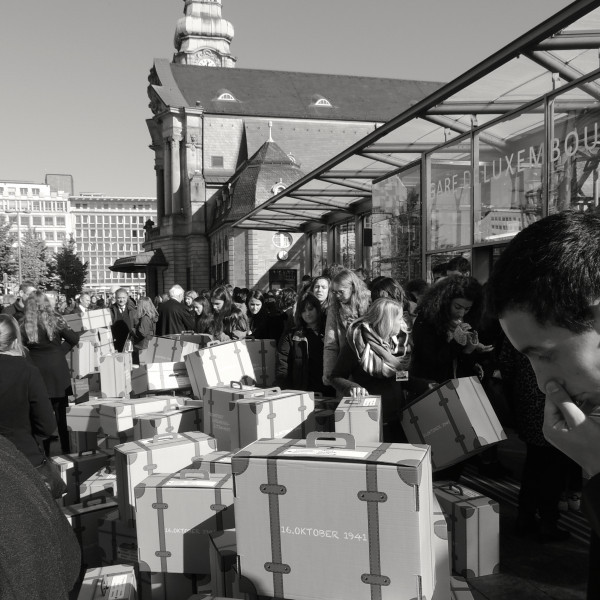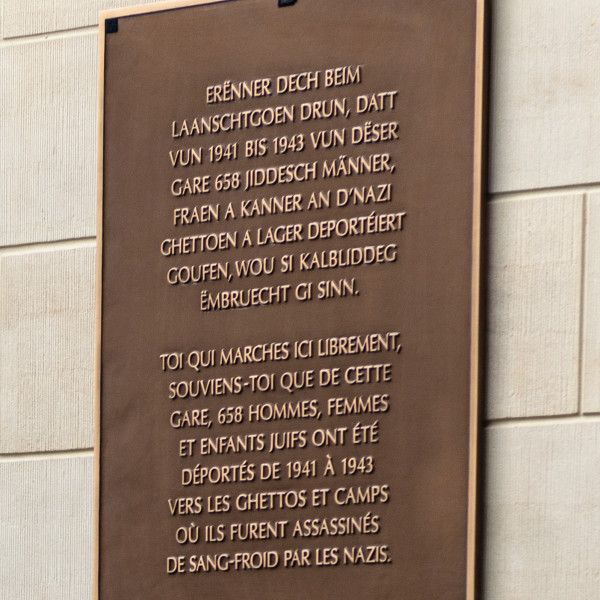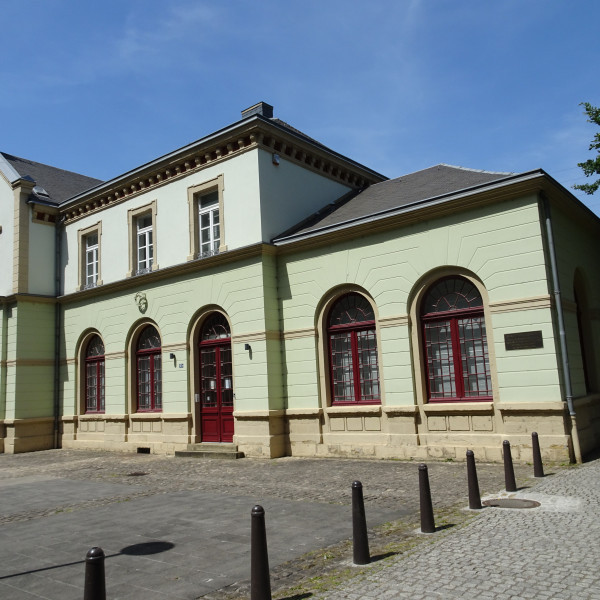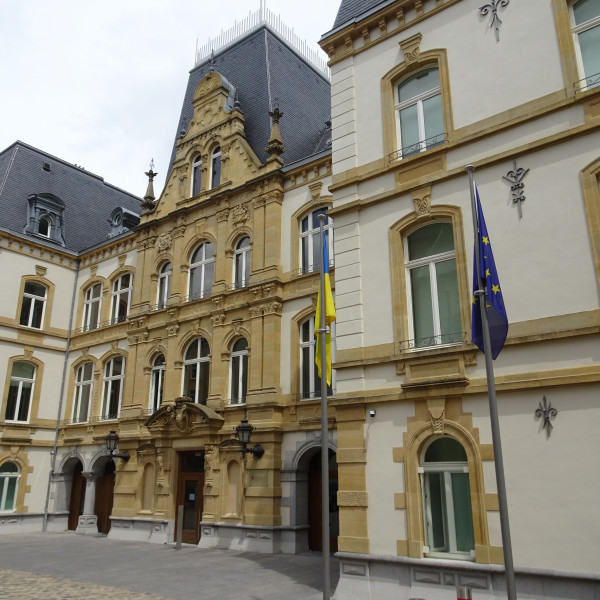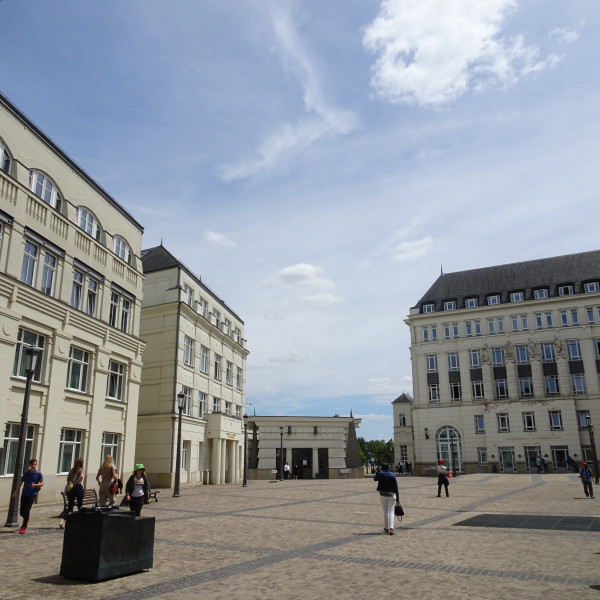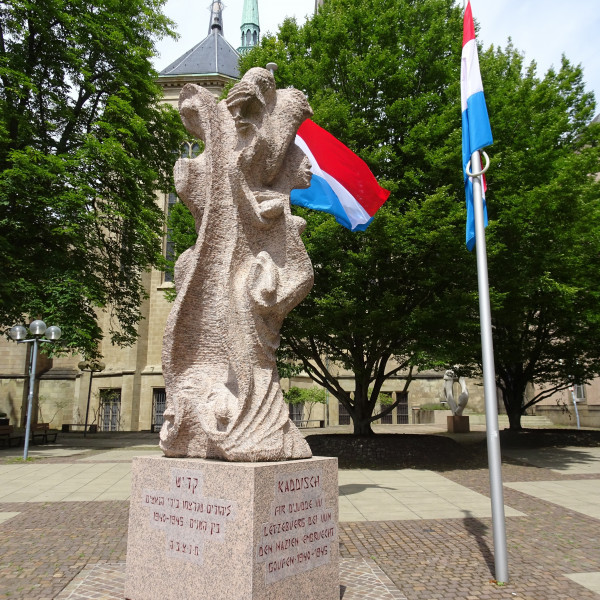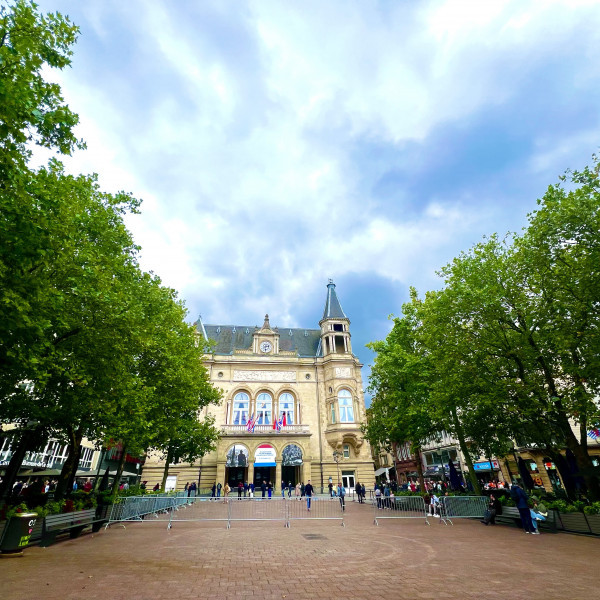
1. Central Station - Deportations
Of the almost 4000 Jewish residents of Luxembourg at the beginning of the war, only about 60 were still living in Luxembourg in so-called “mixed marriages” at the end of the war. On 10 May 1940, the day of the German invasion, several hundred Jewish families had already fled to France and Belgium. When the racial laws and other anti-Jewish measures were introduced in September 1940, there were still about 1800 Jewish people living in Luxembourg. That is when the emigrations and, from 16 October 1941, the deportations to the East, namely to the concentration and extermination camps began. A total of 658 persons of Jewish origin were deported directly from Luxembourg to the East. 44 of them survived the Shoah, which corresponds to a survival rate of 7%.
The first deportation took place on 16 and 17 October 1941. A total of 323 Jewish persons were deported to the Litzmannstadt ghetto in the course of this first deportation. The deportees had to pay for the ticket to Litzmannstadt (the Polish city of Lodz, renamed by Hitler) with their own money. The Gestapo held the Jewish consistory responsible for the punctual arrival at the main station. The consistory thus paid for buses to take the deportees to the main station. The area there was largely cordoned off by the Gestapo. According to the latest findings, 190 Jewish people from the Trier-Bernkastel area were brought to Luxembourg and joined the Luxembourg group. After 14 hours of waiting, the third-class train left the station on 17 October at about 1 a.m. It reached Litzmannstadt the following day with 513 people aboard at 2.30 p.m. Of the 323 deportees from Luxembourg, only 11 survived the Shoah.
The second deportation to Izbica near Lublin in occupied Poland took place on 23 April 1942. The deportees were first taken to Trier and then to Stuttgart, where they became part of a larger transport. The Luxembourg deportees reached Izbica on 29 April 1942, and were most likely taken to the Sobibor extermination camp in mid-May 1942. None of these 24 deportees survived the Shoah.
The third deportation followed on 12 July 1942. Another 24 Jewish deportees were probably transported via Chemnitz to the Auschwitz-Birkenau extermination camp. None of them survived.
The fourth deportation took place two weeks later on 26 July 1942. The 24 Jewish deportees were first taken to Trier, then to Cologne and finally to Theresienstadt. Of the 24 deportees, two women survived.
The fifth and second largest of the seven deportations to the East took place on 28 July 1942, only two days after the fourth deportation. The train started at the so-called "Jewish old people's home" in Fünfbrunnen in the north of Luxembourg with a total of 77 elderly people. In Luxembourg City, the remaining deportees joined them. Among them were 27 seriously ill people from various hospitals and five inmates from the sanatorium in Ettelbrück. The train consisted of cattle cars, which were equipped with mattresses, straw and blankets. Among the deportees was the then 80-year-old painter Guido Oppenheim. The train reached the Theresienstadt ghetto on 30 July 1942. Of the 156 people deported, only 9 survived the Shoah. Of the 147 victims, 73 died in Theresienstadt, the rest were deported to extermination camps.
The sixth deportation took place on 6 and 7 April 1943 from Luxembourg to Theresienstadt. The deportees were crammed into five freight cars at the Fünfbrunnen collection camp. The elderly and sick had to be carried into the freight cars. The transport reached the Theresienstadt ghetto after an odyssey of three days and four nights. It is said that several people were already dead on arrival. With this transport, Fünfbrunnen was de facto disbanded. Of the 97 deportees, a total of 20 survived.
The seventh and last deportation took place on 17 June 1943 from Luxembourg to Theresienstadt and partly to Auschwitz-Birkenau via Berlin. Of the 10 deportees, only two survived.
In total, it is estimated that more than 1300 Jewish victims who were living in the Grand Duchy at the time of the German invasion were murdered by the Nazi regime. Those who were not deported from Luxembourg were in many cases picked up by local police and German occupying forces in France and Belgium and deported from there to extermination camps.



